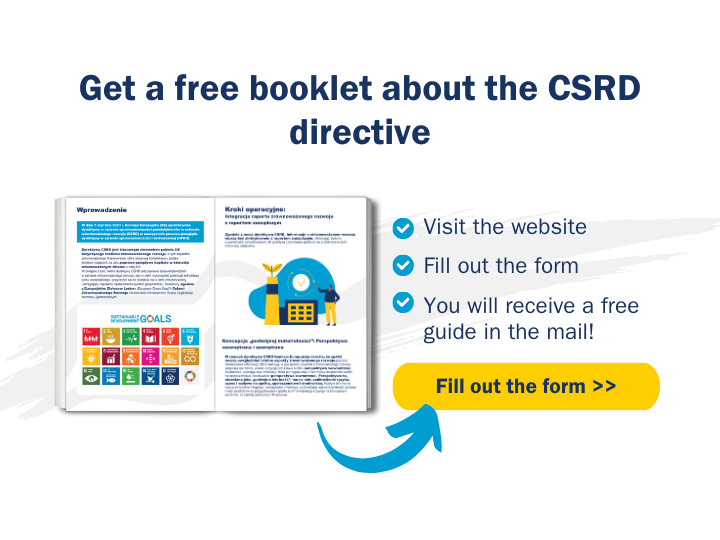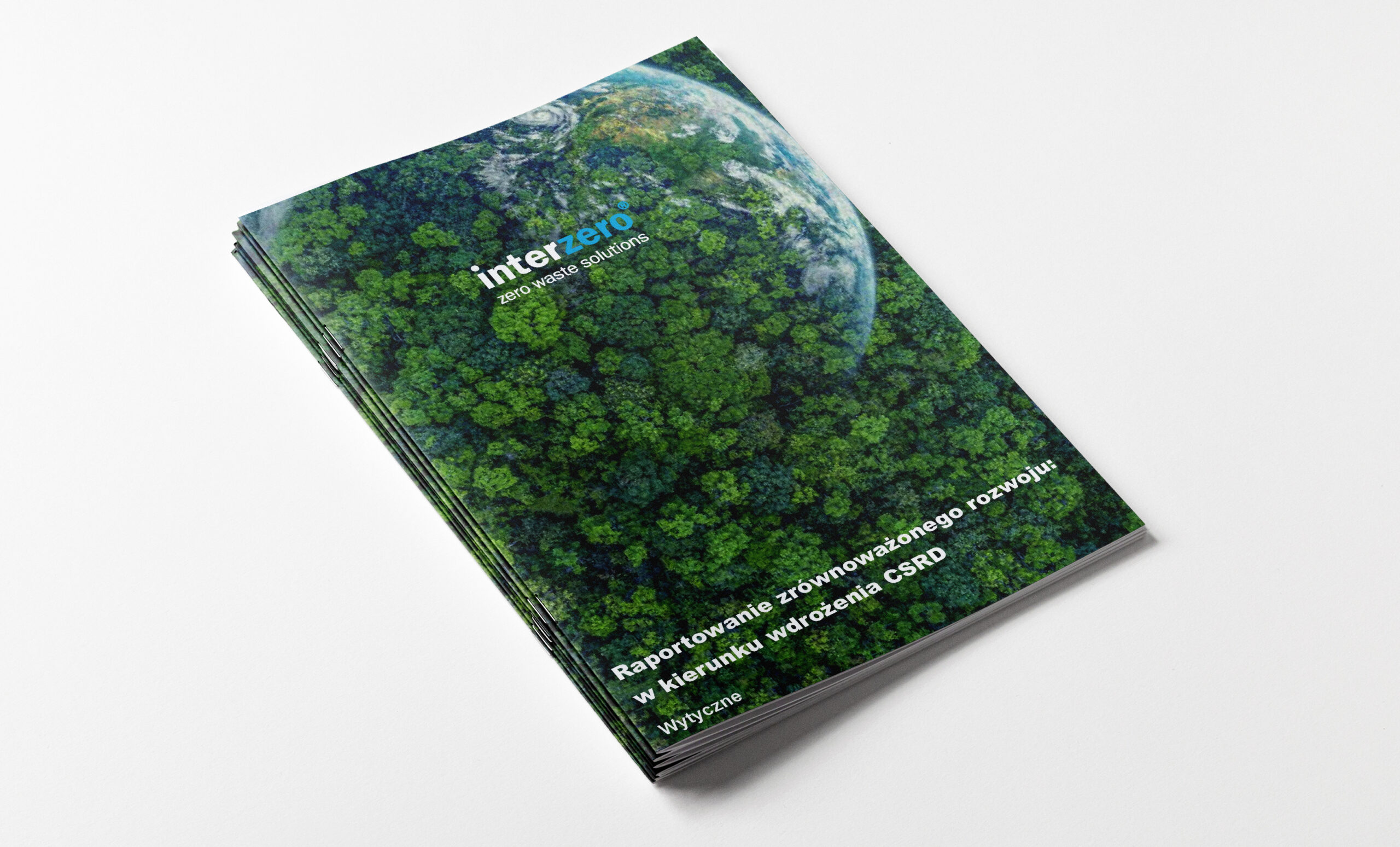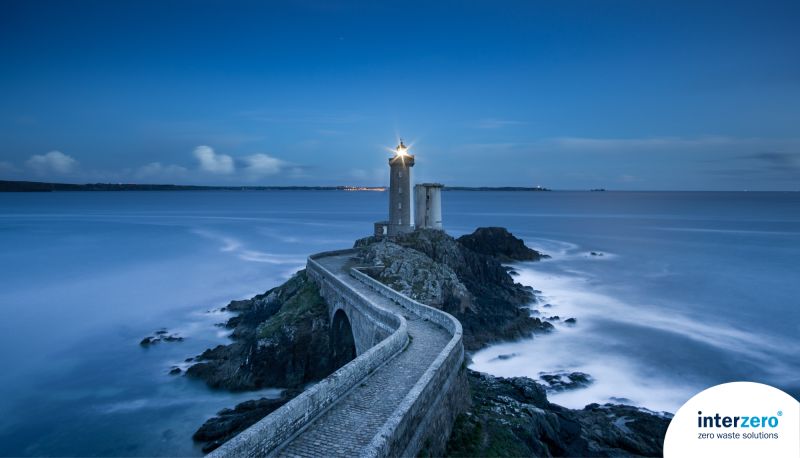Sustainability Reporting: towards the imprementation of the CSRD
Sustainability Reporting: towards the implementation of the CSRD
How does the CSRD on corporate reporting affect your organization’s activities?
On January 5th, 2023, the European Commission (EC) published the Corporate Sustainability Reporting Directive (CSRD), following the review process of the Non-Financial Reporting Directive (NFRD).
The CSRD is a key element of the EU’s sustainability measures package, including aspects of sustainable finance, which comprises a comprehensive set of measures aimed at improving the flow of capital towards sustainable activities across the EU.
The objective of the CSRD is to enhance sustainability reporting in order to fully leverage the potential of the European Single Market and contribute to the transition towards a fully sustainable and inclusive economic and financial system, in line with the European Green Deal and the United Nations Sustainable Development Goals (SDGs).
The document explores the following areas:
- Introduction to the CSRD
- Reporting timeline
- Interzero’s support for ESG reporting
- Communicating sustainability
- Operational phases
- Environmental, social, and governance factors, digitalization, and security.
To download the document, please fill out the form:

Did you know that glitter has been banned in the European Union?
This initiative aims to counteract the negative effects of microplastics on the environment and human health. However, cosmetics will gradually be subjected to the new rules: the glitter present in products to be rinsed off will be available until 16 October 2027 and in those to be left on the skin until 16 October 2029.
In 2030, synthetic polymer microparticles used to encapsulate perfumes will be banned. In 2031, the ban will cover granules that fill synthetic surfaces in sports facilities. Eventually, in 2035, the ban will extend to lipsticks, nail polishes and other makeup products.
This decision is part of the European Union’s strategy in the fight against pollution and in the ecological transition process. The European Commission explains that the new regulations aim to prevent the release of around half a million tonnes of microplastics into the environment. Even though glitter makes up a relatively small portion of total pollution, its elimination is of primary importance.
The ban does not affect glitter made from biodegradable, organic or water-soluble materials.
PNRR Resources 2023
600 million euros of PNRR resources will be part of the interventions of the Ministry of the Environment and Energy Security in the sectors of waste collection, logistics and recycling of waste electrical, electronic, paper and cardboard equipment.
The funds will be allocated to the mechanization of separate waste collection and the creation of additional waste treatment facilities. The total resources were allocated 60% to the Central-Southern Regions and 40% to the Northern Regions. The projects include the modernization of existing plants and the improvement of collection, especially of plastic waste.
Interzero Italia will accompany you on the journey towards environmental neutrality and the circular economy.
Circularity index: what it is and how it is measured
For this reason, knowing the definitions and measurement indices can be a great advantage: indicators and parameters are the perfect allies for quantifying the margin for improvement and successes regarding aspects that are sometimes difficult to measure.
The UNI 11821 Technical Specification entered into force in Italy on 30 November 2022 and describes a unique rating method for measuring the level of ‘circularity’ of a company, of any size. The reference standard is applicable both at a micro level (single organisation, including local authorities) and at a meso level (groups of organizations such as industrial districts or production chains). The macro level (region/country) is excluded from the scope of application although Appendix B indicates guidelines for measuring circularity also at this level.
The index can measure everything that is produced in companies, in all sectors and without exceptions. The data necessary to calculate the indicator must come from processes belonging to one or more value phases such as design, procurement, production, distribution and sale, use and consumption and end of life. The nature of the indicators can be quantitative, qualitative and semi-quantitative.
‘Circularity indicator’ means a measurement of the ‘level of circularity’ of a company. The ‘level of circularity’ (LoC) is the company positioning in relation to a rating system which, in the case of the Technical Specification in question, is built on the basis of the following dimensions of ‘sustainability’: materials, energy and water, waste and emissions, logistics, products and services, human resources, asset policy and sustainability. Each dimension underlies a set of indicators, satisfying which the company obtains a positioning or a level of circularity.
The standardization of a circularity index could allow recognition at a European level and, therefore, additional support in the energy transition path of companies. The steps taken at the legislative level by the European Council are an encouraging aspect, but having an analysis method available that allows precise data to be obtained would allow for a parallel between circularity and environmental product certification.
The issue of measuring the level of circularity also takes on significant importance in the calculation of impacts and in the adoption of mitigation, reduction and compensation measures in order to improve the company’s environmental performance. An accurate measurement of one’s circularity also constitutes a marketing and attractiveness opportunity for investors and partners.
How many ways are there to measure circularity?
One of the most common elements among the various existing methods is the preparation of an input – output balance following a “Life Cycle Based” approach. In general, as indicated by the Ministry of Economic Development in the framework and strategic positioning document “Towards a Circular Economy model for Italy”, the approach in defining a budget can be gradual both in considering the types of resources to be inventory (material, energy), both for the degree of in-depth analysis (e.g. in the involvement or otherwise of suppliers or other subjects in the supply chain).
Interzero has the experience to conduct corporate circularity measurement activities. The company will receive an analytical document leading to the evaluation of the Circularity Indicator and a certificate relating to the Circularity Indicator. Interzero guarantees a reliable service: the Circularity Indicator calculated follows current legislation (the Technical Specification UNI 11821) and is therefore certifiable. In addition, Interzero also offers support for the certification of the Circularity Indicator, always guaranteeing maximum competence and transparency. Interzero’s environmental consultants make their expertise available in the field of analysis of product life cycles and in the reuse of materials that have reached the end of their life to guarantee each company a safe and effective environmental transition in full compliance with regulations.
COP27 targets for emissions and renewable energy
The aim of COP27 is mainly one: to find and adopt solutions that allow us to achieve climate neutrality by mid-century and the use of 100% renewable energy by 2035.
The context of this United Nations Climate Conference is a difficult one, fresh from extreme weather phenomena and an energy crisis that compromises every link in the production chain. Despite this, promising data from recent months demonstrates the resilience of countries in the face of the climate crisis and has seen an encouraging improvement in data regarding recycling and the reduction of CO2 emissions. However, it remains essential to find a line of agreement to protect the future of our planet and coordinate on the solutions to be adopted with a view to the circular economy.
The actions to be implemented are, as indicated at COP21 in Paris, fundamental for the Planet. First of all, efforts must be intensified to try to limit global warming to 1.5°C above pre-industrial temperatures ; therefore, limit the impact that industries have on the planet as much as possible. What are the objectives of COP27?
First and foremost, climate change mitigation through emissions reduction. We are on the right track, but there is room for improvement and environmental neutrality results are more achievable than ever. The use of new technologies and renewable energy sources, the energy efficiency of old equipment, the modification of management practices or consumer behavior are solutions that countries will have to implement by presenting containment objectives. The second point on the COP27 Agenda is adaptation to climate change and, consequently, facilitating climate finance and investment in sustainable energy resources in order to contain the damage .
The energy crisis and the climate crisis are aspects that need attention at the same time. The approval of climate laws to cut greenhouse gas emissions will be the first step towards achieving environmental neutrality and will affect the electricity, transport and heating sectors. The commitment to the energy transition towards resources that are not harmful to the planet and the cancellation of emissions is the topic that is closest to Interzero’s heart and to the companies that ask for our help to become an active part of the solution.
EU Directive on Common Chargers
The main aim is the reduction of electronic waste associated with the production, transport and disposal of chargers: the directive facilitates consumers in making more sustainable choices when purchasing and using technological devices. In fact, a symbol will be introduced that specifies whether a new device is supplied with a charger and a label that informs about charging performance: in this way, consumers will be able to choose whether to purchase a new device with or without a charger and use the same charger for several devices.
Extended Producer Responsibility: what is it?
The EPR assigns responsibility to the producer for the product placed on the market even in the post-consumption phase. This way the producer can be responsible for the organizational part. waste prevention, reusability and recyclability of products.
Waste prevention programs and design improvements at the design stage play a critical role in extending the life of products placed on the market.
With the receipt of the EPR, a National Register of Producers was introduced, in which all subjects subject to the new liability regime will have to register.
Interzero Italia ‘s mission is to drastically reduce the quantity of waste by giving products a second life thanks to reuse and encouraging the adoption of eco-sustainable product design and planning techniques.
Treaty on plastics: where are we at?
The legal foundations were thus laid to build the first legally binding global treaty on plastic pollution. A historic moment, the most important agreement since the Paris Climate Agreement: a provision that takes into consideration from a legal point of view all phases of the life cycle of plastic. This resolution provided for the establishment of an Intergovernmental Negotiating Committee with the task of defining a proposal for a global treaty against plastic pollution by the end of 2024. The importance of this treaty lies in its nature of a legal obligation, a provision that rekindled the hope of witnessing a concrete change desired collectively by the great majority of the world’s political leaders.
How did the issue evolve?
Two perspectives have arisen on the fundamental strategy to follow: reduce plastic or strengthen recycling management? On the one hand we find Europe and African countries pushing for a reduction in the production of plastic polymers. On the other hand, countries such as the United States and Saudi Arabia claim that the solution lies not in reducing production but in improving plastic recycling systems.
Investments and commitments in the recycling system remain of fundamental importance, but even when our energies are focused on the best possible waste management, we must not forget the amount of plastic that is released into the environment every year. The most effective way is undoubtedly the circular economy: only by closing the circle can we aspire to rethink the way in which we and companies use plastic materials.
For this reason Interzero hopes and is committed to a circular change in the production systems of plastic materials: introducing recycled materials into the market makes it possible to overcome the need to increase plastic production. Within a circular economy, goods and materials enjoy multiple lives and enter a respectful production “loop” in terms of use of resources and releases of plastic materials into the environment. Knowing the lifespan of plastic products allows you to calculate how long and how many times they can be used. Allowing plastic materials to live in multiple forms means a major reduction in environmental waste: for this reason, implementing the principles of the circular economy on a large scale will allow us to reduce waste and save resources.
resources SAVED by recycling Video
Waste is a resource
We talk to Anna Grom, CEO of Interzero Circular Solutions Europe, about circular business models in a market marked by international conflicts and the pandemic. This tense situation has shown the fragility of supply chains and shown how much the lack of strategic raw materials can cost.
The circular economy presents itself as a solution to these problems. The use of recycling will be strengthened and the security of energy, economic resources and environmental raw materials will increase. What are the new prospects of the circular economy? Anna Grom answered our questions and presented us with the model change that the market is implementing.
Now Environment: with first the pandemic and now the war in Ukraine, has corporate ecology gone to the dogs?
Anna Grom (AG): In times of constant change and serious challenges we face, both for governments and for society, security has become the most important thing. We were concerned that in the waste sector current events would overshadow issues of sustainability and the circular economy. However, the opposite happened. We have understood that the circular economy is a remedy for current problems. Thanks to it, energy, economic, raw material and environmental security increases. This strengthens the role of recycling and the closing loop , which guarantee the economy access to fundamental raw materials and their longer use. Therefore, if the pandemic, in addition to the painful human dimension, has accelerated digitalization, the current geopolitical and market turbulences have created favorable conditions to change business models towards more sustainable ones.
And is this happening?
AG: Unquestionably. We can also talk about a paradigm shift. Until a few years ago, when we talked to clients about environmental issues, many of these discussions focused on a green image and short-term actions. Now it is completely different, because long-term visions dominate and companies are interested in developing sustainable business models. We see this particularly in the automotive, food and cosmetics sectors.
Does such a change in the business model make sense in a small and medium-sized enterprise?
AG : We are talking about the competitiveness of companies in the near future. Some companies have understood that the time for change is here and now. We cannot let any more time pass because the world is preparing, companies must accept the challenge, otherwise they will have to take into account a decrease in their market share. We remind you that the condition of the local economy depends to a large extent on small and medium-sized businesses. The most important thing is that we can help them. Just contact us.
But shouldn’t business models be related to current legislation?
AG: There has also been a change in the position of companies in this area. A year ago I would have said that companies would wait for the new rules before acting. Now business no longer hesitates, as entrepreneurs realize it’s not a matter of if, but when. And time plays a key role here, especially in the face of the increasingly bold strategies of those companies that have already announced that they will have 100% recycled packaging by 2027. This means that whoever gets the second raw materials first wins. Added to this is the EU’s legislative offensive. Only a few days ago the European Commission published a draft regulation on packaging and packaging waste which follows a well-known direction. Member countries have reduced waste, increased recycling rates and the use of recycled materials in products.
It’s just that national legislation does not always keep up with European legislation.
AG: True, but responsible business is preparing for the future and is already exploring the options available today. From the version of analogue solutions we move on to digital ones, in which the benefits of ecology will be measurable for the business. Companies will stop looking at sustainability through marketing amplification. I expect that a turning point awaits us, which will lead to fundamental changes in the functioning of businesses, mainly in the production and logistics sector.
And will marketing no longer be necessary?
AG: In turbulent times when we are witnessing a humanitarian crisis impacting the condition of the global economy, the factor that most influences purchasing decisions is price. Now the question is how marketing can help reinforce the message that “green means cheap”. We already have many examples today. Personally, I really appreciate the minimalist trend in packaging design. They seem simple, but that’s what sets them apart on the market at least now and it’s easy to recycle. Furthermore, this change is not limited to packaging. Let’s take a look at what’s happening with products announcing new business models. One of them is, for example, a Vaude bicycle bag, the main structure of which is made of recycled plastic. This product was developed in collaboration with Interzero in Germany.
So the hardware and software of the new waste management are developing.
AG: Such solutions are the harbingers of a new circular economy. For example, we work with the Irish company PEL, which created the Internet-connected BriteBin Solar solar waste containers. Sensors installed in them send information about the filling level of the bin to the waste collection management company. This technology has already proven itself in several cities. As a result, the number of waste collections has been reduced by up to 90%. I add that the device itself can be equipped with a press that compresses waste and a number of other accessories, such as an air filter or a Wi-Fi router.
So digitalisation will change waste management.
AG: Digitalisation means a new quality of waste management. It guarantees transparency, allows you to optimize costs and eliminate unwanted incidents linked to the “disappearance” of raw materials. We are currently working with an international team on another solution for the customer, which will provide him with the ability to monitor his waste streams throughout the entire product lifecycle. All data will be available in the app. The customer will be able to verify that they need, for example, 200 tons of rPET, and can sell the rest. We’ve never had such a reliable data source before. This project is also a preparation for the challenges related to the Digital Product Passport referred to in the regulations adopted as part of the European Green Deal. It will allow the data to be used to identify the product, its origin and composition.
Does this mean the end of classic waste management?
AG: I believe that classic waste management is slowly becoming a thing of the past. Technologies, regulations, but above all the attitude of entrepreneurs are changing, as demonstrated by the construction of new business models. Finally, waste and recycling are starting to be perceived as a safe and effective source of strategic raw materials.
The timetable of the National Strategy for the Circular Economy
The Strategy had already been published in June 2022 together with the National Program for Waste Management. The time frame of the measures goes from the last quarter of 2022 to the end of 2026, the deadline by which all investments and reforms of the National Recovery and Resilience Plan will be completed.
The desire to initiate change becomes increasingly concrete with the approval of timelines and strategies to advance towards the complete circularity of the economy. The Ministry of Ecological Transition has approved a timetable with the aim of ensuring the country has an already planned path through indications of timing and details relating to the plans already foreseen in the National Strategy for the Circular Economy.
The MiTE defines the decree schemes for the establishment of extended producer responsibility (EPR) systems for “circular” strategic supply chains such as the textile and plastic sectors not intended for packaging. Regarding the ‘end of waste’, between the first and fourth quarter of 2023, the Ministry writes, the issuing of national decrees with the criteria for the cessation of waste qualification will be accelerated. Following the timing dictated by the program, the Ministry will issue decrees on sweeping soil, mixed plastics, textiles and batteries and accumulators. Furthermore, the regulation for the simplified authorization for preparing for reuse is expected to be adopted by the end of 2023.
Among the deadlines to be respected we find the commitment to transmit the draft ministerial decree which defines the regulation of the national electronic waste traceability register (Rentri). Other points to be respected according to the program include the identification of environmentally harmful subsidies that pose an obstacle to the implementation of the Circular Economy Strategy. By the end of the year, the aim is to complete the process for the approval of the ministerial decrees which will establish the rules of the system and introduce the new digital models of the loading and unloading registers and waste identification forms.
The governance of the strategy has been entrusted to the Observatory for the Circular Economy which has the task of monitoring, defining and identifying the steps and targets during the application of the Strategy and of updating the timetable. The report on the implementation of the Strategy will be updated annually and publicly accessible on the MiTE institutional website.
The transition towards the circular economy does not take place only through regulations and decrees, but is encouraged by the progress of financial incentive projects and schemes, the simplification of business networks with circular purposes, the regeneration of brown areas in circular eco-districts with a view to symbiosis industrial. For this reason, MiTE, in collaboration with the Ministry of Economic Development, declares its commitment to also focus on technical support systems for regulations.
The approval of programs whose objective is the complete transformation of the economy into a circular system shows how every type of commitment, on the part of consumers, companies, producers and institutions. Navigating European and local regulations does not represent an obstacle if supported by sector professionals like Interzero: with our commitment to supporting companies we act in the interests of the environment and the transition towards the circular economy.










